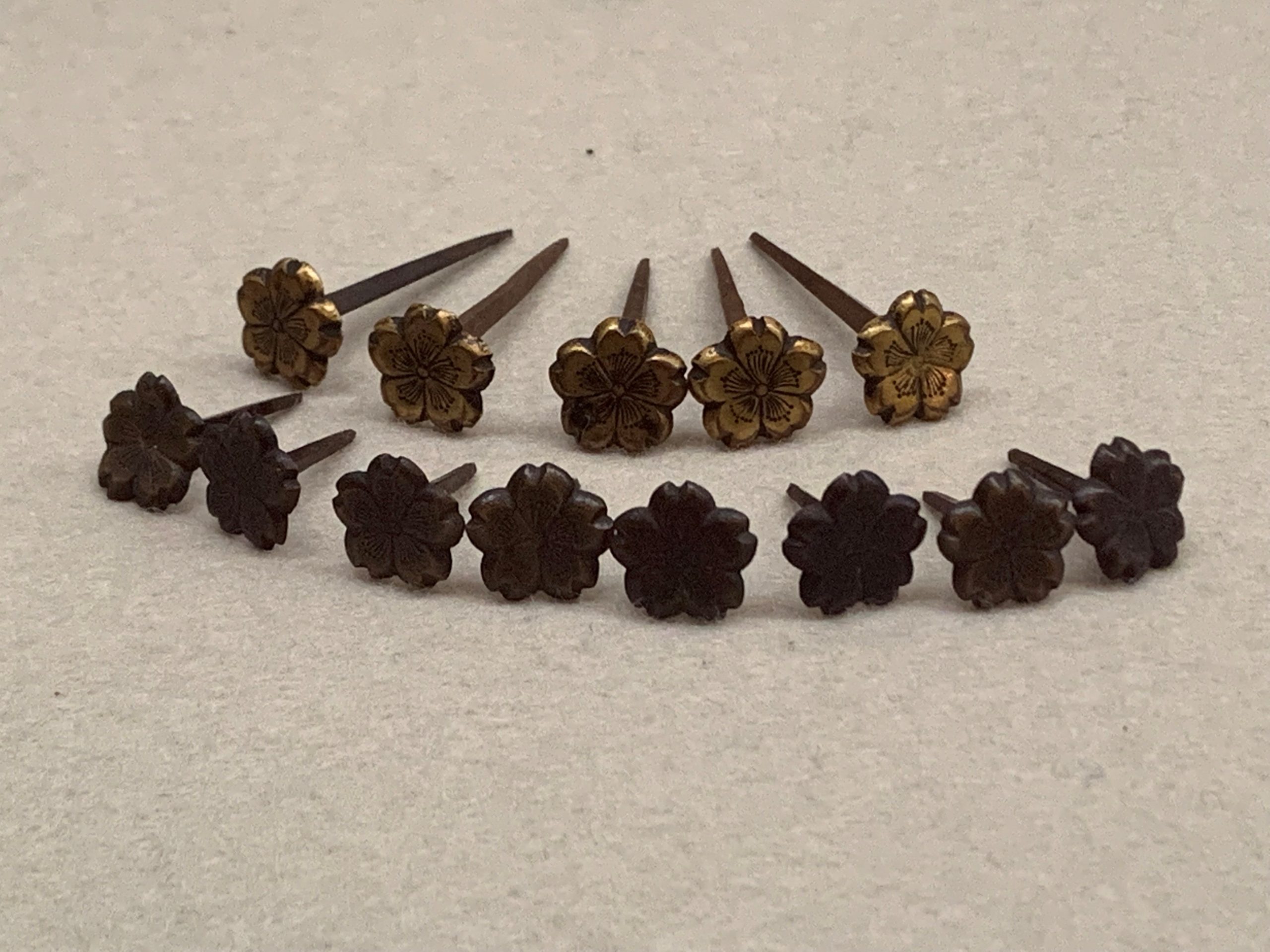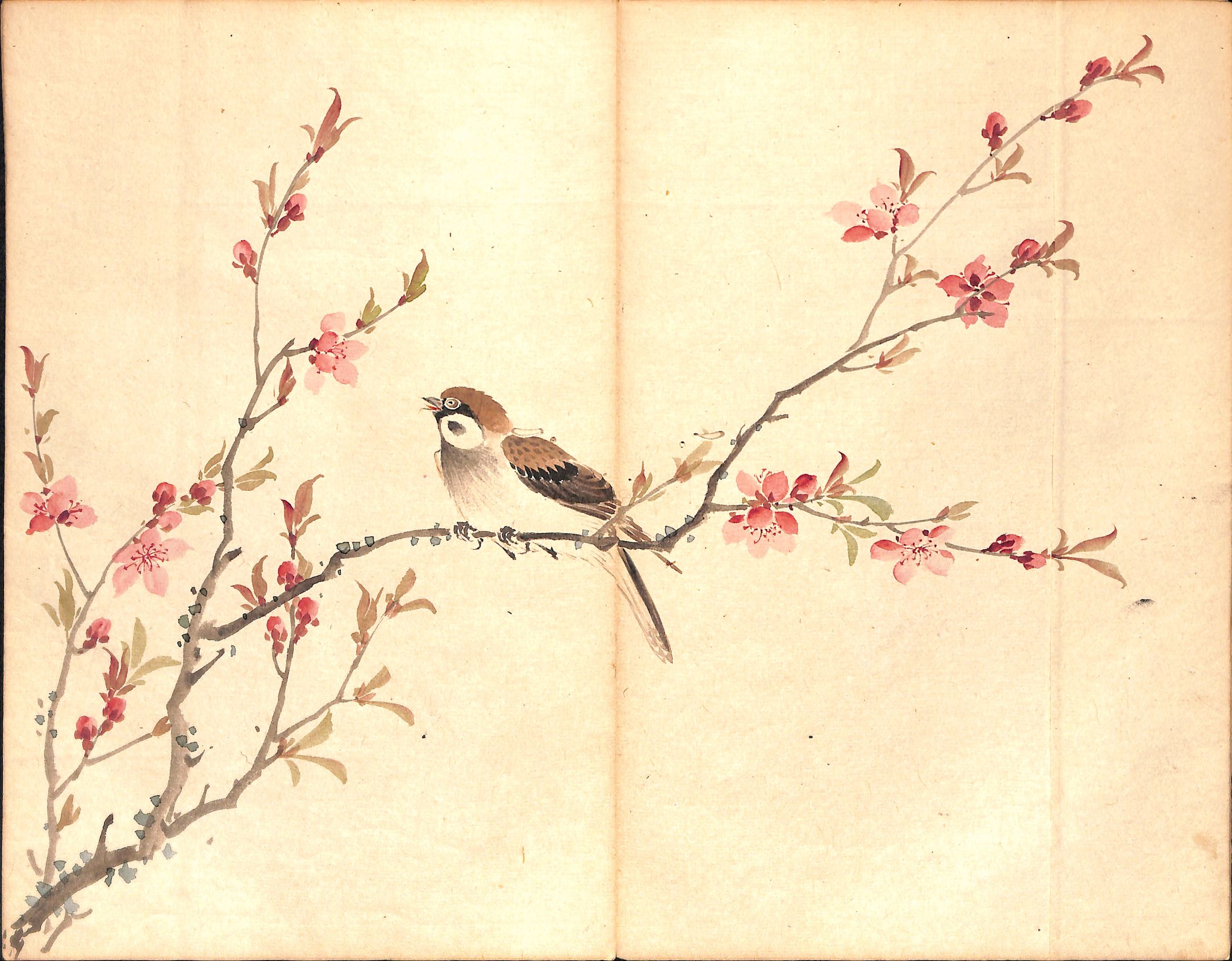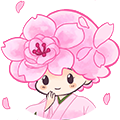Hello! We can’t believe it’s already mid-April! At our museum, the annual spring exhibition “The Flourishing of Cherry Blossom Trees in the Edo Period” is currently being held, so please visit us!
When you look at the theme of this year’s exhibition, you may wonder why it is about Edo (present-day Tokyo), while the museum is located in the Kansai area. In Japan, there is an old era called “the Edo period”. This exhibition highlights the cherry blossom trees during the Edo period, which Sasabe Shintaro considered the most ideal time in history for cherry blossom trees. Here, we would like to introduce the history and culture of cherry blossom trees in the Edo period.
To begin, we will focus on hanami, or cherry blossom viewing. For the Japanese, flower viewing cannot be mentioned apart from cherry blossoms. In present-day Japan, cherry blossom viewing is a typical spring tradition. When the spring comes, people go out for a time of cherry blossom viewing and enjoy eating and drinking under the trees. This custom of cherry blossom viewing especially flourished in the Edo period.
Tokugawa Ieyasu founded the Edo shogunate (military dictatorship) at the beginning of the 17th century, and this governance lasted for 260 years until the Restoration of Imperial Rule in 1867. This period of time is called the Edo Period. Under its stable and peaceful governance, various cultures flourished in the Edo period. During the reign of the 8th Shogun Tokugawa Yoshimune (1716-1745), many cherry blossom trees were planted on the banks of Sumida-gawa river for him to enjoy while staying at his palace beside the river (in present-day Sumida-ward, Tokyo) for falconry and other pleasures. It was the beginning of his large-scale planting project of cherry blossom trees. Subsequently, many cherry blossom trees were also planted in Gotenyama (present-day Shinagawa Ward, Tokyo) and Asukayama (present-day Kita Ward, Tokyo). These places became the cherry blossom viewing spots and were widely open to the public. This is how the cherry blossom viewing has become a spring tradition for Japanese people to this day.
The way people enjoyed cherry blossom viewing during the Edo period are depicted in the current exhibited works of art at our museum. Let us introduce a few works from the exhibition:
The first work is a small 1.8 metre long scroll titled “Cherry Blossom Viewing at Sumida-gawa River” by Utagawa Sadatora from the 19th century. The second work titled “Cherry Blossom Feast at Gotenyama”, painted by Hayashi Toui (also known as Ekin), depicts a scene of people sitting on a woven-rush mat under the cherry blossom trees, enjoying the view while eating and drinking. This shows that the way we enjoy cherry blossom viewing today was first established during this era. The third and final work is a Nishiki-e painting titled “Cherry Blossom Viewing” by Ikeda Eisen. This painting was used in the flyer and poster for this exhibition. The stone monument depicted at the back of the row of cherry blossom trees makes us presume this place is Asukayama (in present-day Kita Ward, Tokyo).
-1024x480.jpg)

-1024x490.jpg)
More works of art are currently exhibited at our museum, such as sake vessels that are used with cherry blossom viewing. Through this exhibition, you can learn more about the cultures of cherry blossom trees that flourished in the Edo period, such as the related literature and the gardening of cherry blossom trees, so please visit us when you can.








Wouldn’t it be nice to live surrounded by items designed with cherry blossoms?